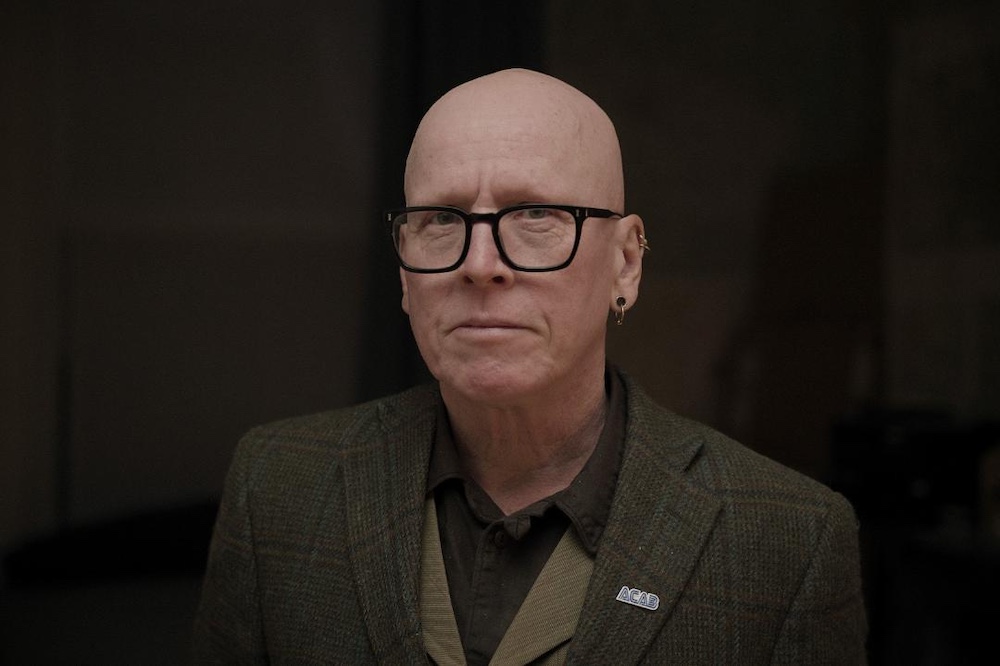Stanley Donwood’s art draws on a host of different influences – landscape painting, comic books, mythology, ancient maps and much more. His oeuvre includes bright, bold paintings as well as digital artworks, drawings, linocuts and other kinds of print. Donwood has produced book covers for novels by J.G. Ballard and artwork for Glastonbury Festival, but is perhaps best known for his album artwork – most notably for the band Radiohead. His latest exhibition, ‘Logical Absurdity’, is a collaboration with Radiohead’s lead singer, Thom Yorke, whom Donwood has known and worked with since the 1990s, and features more than 20 recent works: screen prints, linocuts, lithographs and paintings by Donwood, a painting by Yorke, and several paintings and tapestries made by the pair in collaboration. It is organised by Tin Man Art and is now on display at 9 Cork Street, London, until 14 December.
Residential Nemesis (2000), Stanley Donwood. Photo: Stanley Donwood; courtesy Tin Man Art; © the artist
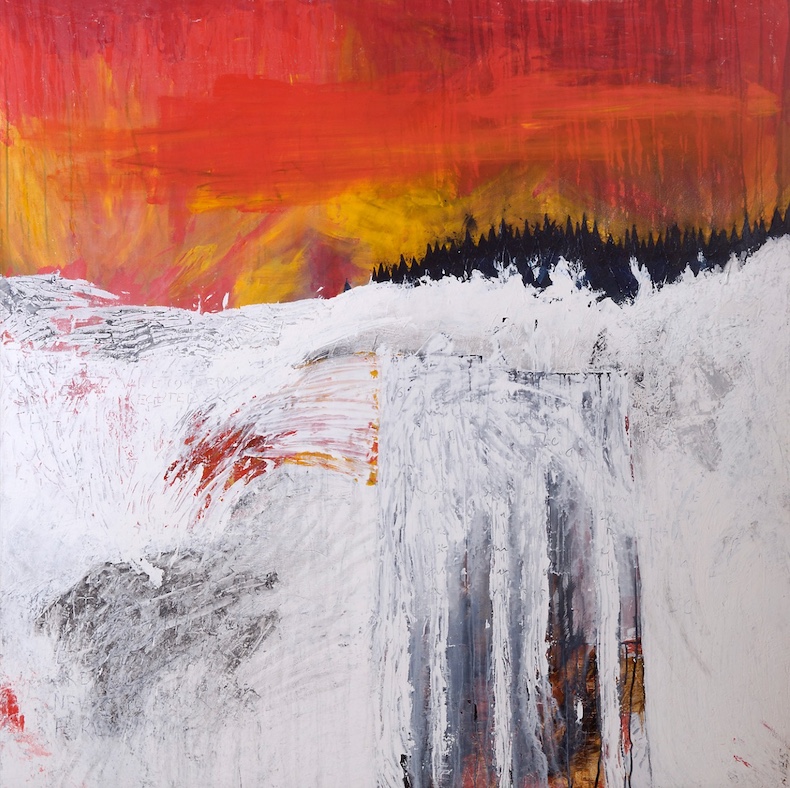
Where is your studio?
The one I have at the moment is in Brighton. I’ve had lots of studios and studio spaces over the years. I think my studio is a state of mind; the surroundings vary in comfort, space, affordability and so on, but the thing is really just to have one, a space where I can make my ideas into some kind of reality. A shed or a palace – it doesn’t really matter to me, and anyway they’re all useless unless I have some ideas about what I’m going to do, which is by no means a given.
How would you describe the atmosphere in your studio?
There’s a very strong smell of varnish. I bought some ‘Yacht Varnish’ partly because I thought it sounded exotic and cosmopolitan but mostly because I needed to varnish some wood. It turned out to have a very strong odour which is giving me a headache.
Selling Fast (1999), Stanley Donwood. Photo: Stanley Donwood; courtesy Tin Man Art; © the artist

Is there anything you don’t like about your studio?
No, it’s very nice (despite the smell of varnish), unlike some that I’ve had before. I once had a studio so cold it was almost impossible to think, and another that was pervaded by a sense of haunting that was impossible to ignore. The one I have now is lovely: I have heating, which is novel, high ceilings and easy access to the sea, in case I need to fake my own death.
What does your studio routine look like?
I’m afraid that I don’t have a routine of any kind for anything. I gather that routines are usually a good thing – very healthy and efficient. But then, I heard the same sort of things said about hobbies; I tried having one of those and it was a disaster. I tried to become a record label boss as a hobby because I thought it would be relaxing – all limousines and drugs – but in fact it was so much work I had to take early retirement.
What is your favourite album cover you’ve designed?
They all have some things I like about them and other things that I don’t. Maybe the ones that I never made are my favourites; like the one made by a rotating robot that would have been screaming the word ‘exterminate’ while firing paint at a cuboid of stretched canvas, or the one of the formal garden with a great big topiary cock made of astroturf and a sky with clouds shaped like vulvas. The ones that got away, as it were. The ones I never made because they were very stupid ideas.
Wraith (2015), Stanley Donwood; used for the cover of the Radiohead album A Moon Shaped Pool (2016). Courtesy Tin Man Art; © the artist
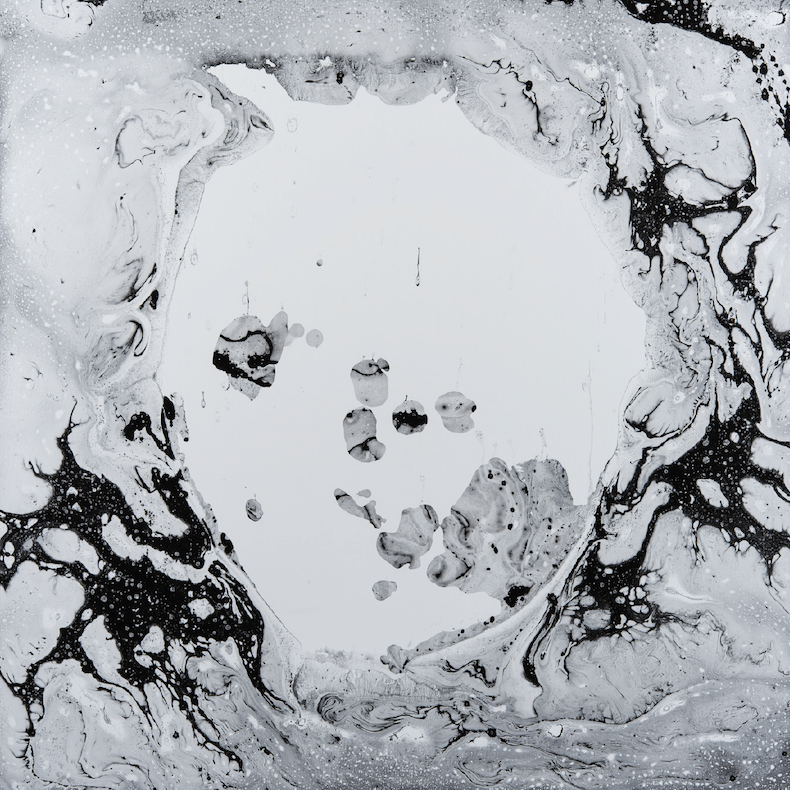
Do you think you and Thom Yorke work well together?
Well, I hope so. We’ve been collaborating for about 30 years; most of it seemed to make at least some sort of sense at the time.
Do you have visitors to your studio, and if so, who is the most interesting visitor you’ve had?
When I had a studio in the countryside there were rats and an enormous number of big spiders too. My most interesting human visitor, in theory, was David Byrne, who popped his head around the door. I say ‘in theory’ because I was too intimidated to speak to him, so objectively it was not very interesting. Luckily he wasn’t in the building to see me – I don’t think he knew who I was – so hopefully he had a good visit anyway.
Goom (2022), Thom Yorke and Stanley Donwood. Photo: Benjamin Deakin; courtesy Tin Man Art; © the artists
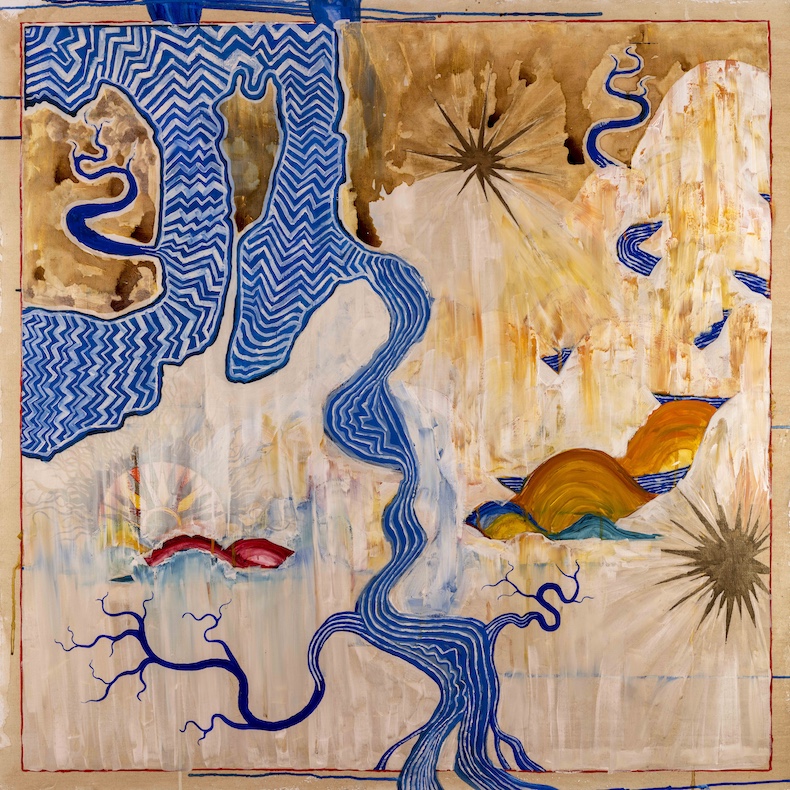
Do you ever listen to anything while you work?
I listen to something all the time. I think I have a dread of silence. When I’m making artwork for music specifically, like Radiohead or Thom’s records, I listen to that music a lot, whether it’s finished or not. If I’m doing anything that involves a computer I can’t listen to spoken words, so then I have to listen to music. If I’m painting or drawing or making something I can listen to radio programmes or podcasts with people talking in them. I much prefer these non-mathematical occupations, the non-computer work. I think I hate computers really, and the internet, despite my earlier almost evangelical enthusiasm for them. I think they’re really boring.
What is the most unusual object in your studio?
There’s a lot of competition but one serious contender is a Jigsaw Jigsaw. It’s a jigsaw of a jigsaw of a jigsaw. Of a jigsaw. And so on and so on. It’s very hard to explain in words. It was made by a man called Darren Cullen; I think you can buy them on his website.
What is your most well-thumbed book?
Again, there’s a lot of competition but I’m pretty sure the winner is David Hockney’s Espace/Paysage, which is a big catalogue from an incredible show he had at the Centre Georges Pompidou in 1999. That show was breathtaking.
A Map of The New World (2024), Stanley Donwood. Photo: Stanley Donwood; courtesy Tin Man Art; © the artist
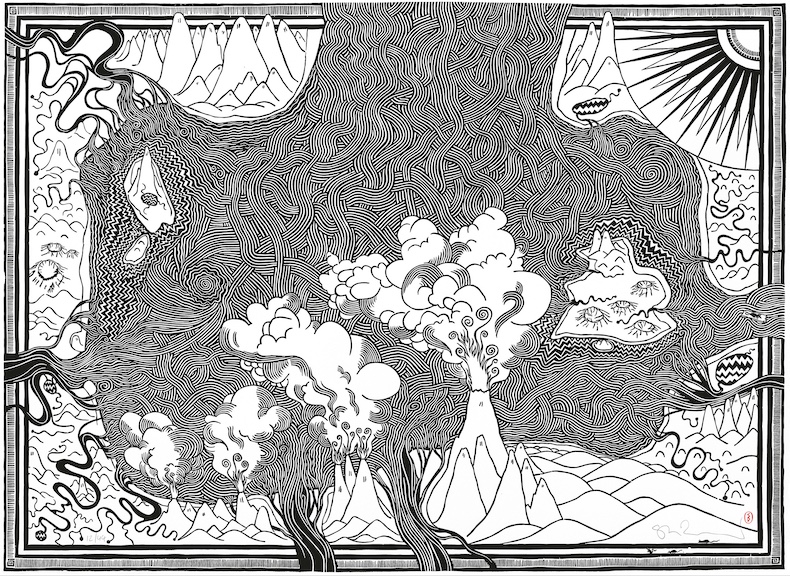
As told to Michael Delgado.
‘Logical Absurdity’ is at 9 Cork Street, London, until 14 December.
